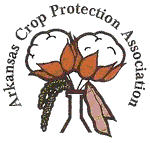King won a first place award with a presentation titled Quantifying the Interference of Palmer Amaranth in Furrow-Irrigated Rice. Furrow-irrigated rice acres are increasing in Arkansas, and the absence of a sustained flood creates a conducive environment for Palmer amaranth emergence and development throughout the growing season. Palmer amaranth escaping control in furrow-irrigated rice creates the potential for reduced rice yields and increased in-season herbicide applications. A field trial was conducted at the Milo J. Shult Agricultural Research and Extension Center in Fayetteville, AR, in 2022 and 2023 to evaluate the impact of Palmer amaranth on furrow-irrigated rice yields. Newly emerged Palmer amaranth plants were marked every 7 days, beginning 1 week before rice emergence through 4 weeks after rice emergence. Palmer amaranth biomass and seed production decreased exponentially over time after the initial emergence of the weed. Across all Palmer amaranth emergence timings, only 57% of the maximum yield potential was reached in the 1 ft2 surrounding the Palmer amaranth plants. Additionally, Palmer amaranth can negatively affect rice yields by 10% up to 2.1 ft away from the plant. All Palmer amaranth plants that emerged within 4 weeks of rice emergence negatively affected the crop, indicating that the need for removal of the weed exceeds four weeks. To preserve rice yields from Palmer amaranth, herbicide applications should be used to delay Palmer amaranth emergence or control the weed shortly after it emerges. The time of emergence of the weed relative to the crop is a critical factor influencing rough rice yields and Palmer amaranth seed and biomass production.
Dodde won a first place award with a presentation titled Amicarbazone-Containing Herbicide Programs as a Replacement for Atrazine in Grain Sorghum. Atrazine is one of the most used herbicides in grain sorghum for preemergence (PRE) and postemergence control of grass and broadleaf weeds. Due to environmental concerns, the Environmental Protection Agency (EPA) has proposed to reduce the rate of atrazine to only 0.5 lb/A/year. Therefore, research was conducted in 2023 at the Milo J. Shult Agricultural Research and Extension Center in Fayetteville, AR, to determine if amicarbazone-containing PRE herbicide programs offer similar weed control without injuring grain sorghum. A randomized complete block design experiment was established with four replications. Treatments were all applied PRE and included amicarbazone, metribuzin, and atrazine alone and in combination with S-metolachlor plus mesotrione. Injury and weed control data for multiple weed species were collected for 5 weeks after grain sorghum emerged. Amicarbazone (0.4 lb/A) plus S-metolachlor (1.6 lb/A) plus mesotrione (0.6 lb/A) controlled Palmer amaranth (Amaranthus palmeri) (>95%) and broadleaf signalgrass (Urochloa platyphylla) (>97%) 5 weeks after treatment (WAT). This level of control was comparable to atrazine (0.5 lb/A) plus S-metolachlor (1.6 lb/A) plus mesotrione (0.6 lb/A). Both treatments never caused more than 6% injury to grain sorghum, and no differences between these treatments occurred. When comparing atrazine alone to amicarbazone alone, weed control was often comparable for the two treatments. Based on these results, amicarbazone should be further evaluated and shows promise as a replacement for atrazine in grain sorghum.

